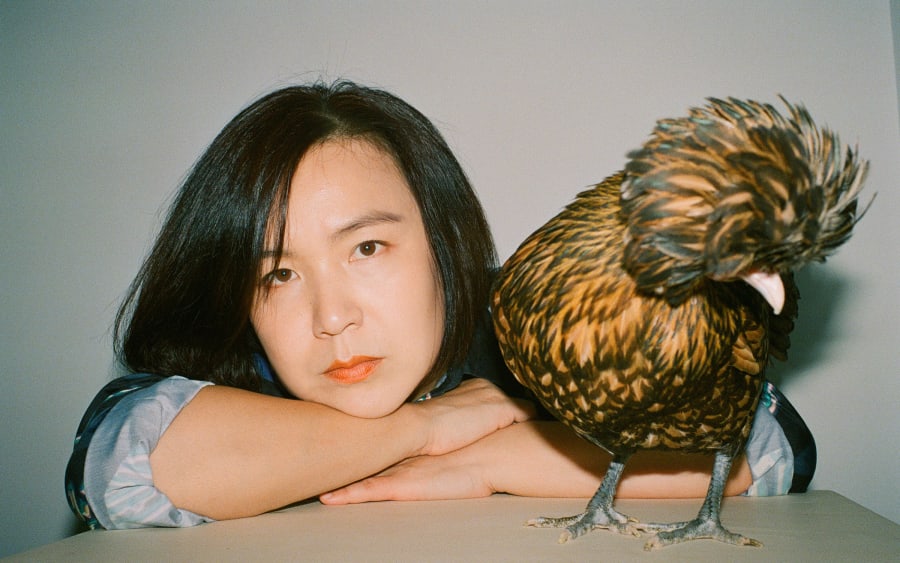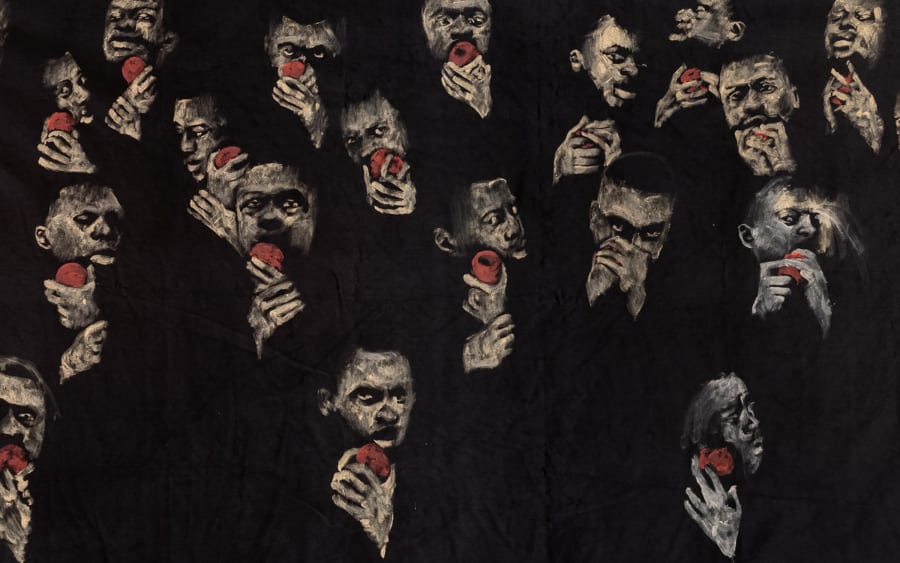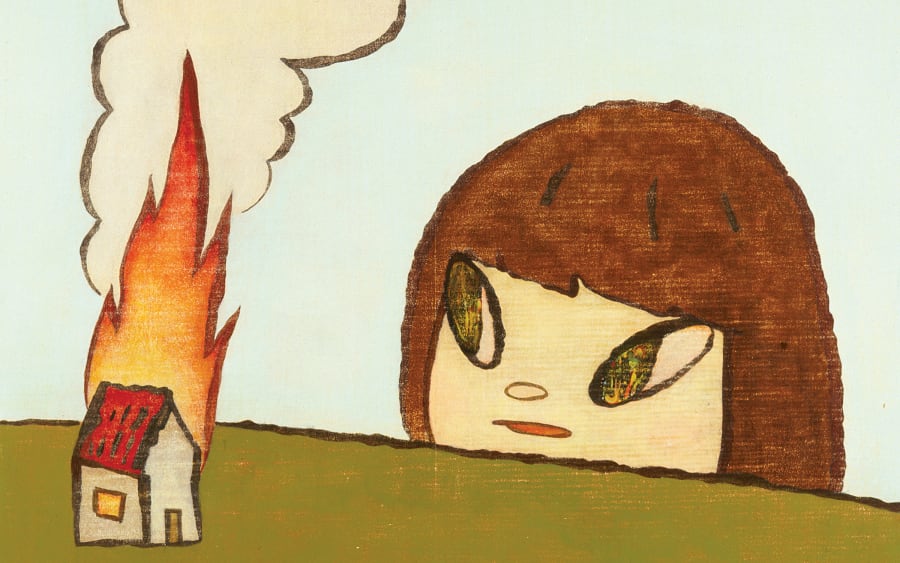‘Avant-garde art doesn’t have anything to do with Black people.’ This dismissive claim – which artist Lorraine O’Grady brilliantly challenged with her 1983 performance piece Art Is... –epitomizes the historical erasure that Legacy Russell’s ambitious exhibition ‘Code Switch: Distributing Blackness, Reprogramming Internet Art’ seeks to correct. From Tom Lloyd’s programmed light installations that sparked controversy at the Studio Museum in 1968 to contemporary digital practitioners, Russell’s curatorial project reveals a continuous but overlooked lineage of Black technological innovation within experimental art.
Presented by The Kitchen, a New York-based non-profit supporting experimental practices, the multisite exhibition is mapped across three chronological domains (pre-1960; 1960-1990; 1990-today) and represents a decade of Russell’s research into what she calls ‘networked Blackness.’ The first part of the exhibition was an archival presentation at the Schomburg Center for Research in Black Culture in New York; the second is a contemporary group show at the Museum of Contemporary Art Detroit (MOCAD).
Art Basel spoke with Russell about the 40-plus contemporary artists selected for the groundbreaking MOCAD show, its strategic location in Detroit, and how these artists redefine the avant-garde through Black technological practices.
What was the inspiration behind this curatorial deep dive into Black data, the digital archive, and Black cultural production?
This is an exhibition that I’ve been working on for upwards of a decade. It’s a project that began with two questions. One was: What would the story of a networked Blackness that exists through and beyond the internet look like if we told it as an avant-garde and experimental history? The other is around this notion of what the art history of time-based media, new media, and digital technologies would have looked like if it had included Black people in its canon from its inception.
Considering the technological landscape that presently exists, where does an exhibition like ‘Code Switch’ find us in this moment?
I think there are a lot of projects that have continued to unfold, upwards of several decades, and it has been quite amazing to see the breadth of survey shows that address intersections of technology and culture, and still, this is a project that is a first in terms of looking at African-American and Afro-Latinx contributions within its frame. This is an exciting opportunity to recognize a dense and incredible history that is intersectional, multigenerational, and interdisciplinary.
Ten years ago the digital media landscape was very different. Can you talk about what originally guided your thought process and how that may have changed as you present the contemporary iteration of the show in Detroit?
Parts of [the project] have changed fundamentally; the format transformed to engage thought, practice, and programming across different institutional sites. It felt very important to be able to ask what the network of the community around the work does to advance discourse. The first part of this project presented at the Schomburg was exciting because this was the first time in history that the Kitchen and the Schomburg collaborated, and it allowed for a cross-pollination of archive, ideas, method, community, and inquiry around the avant-garde, looking at the throughlines across Black radical thought.
As it was presented at the Schomburg, it engaged artists such as David Drake (Dave the Potter) and W.E.B. Du Bois, thinking about the methods of not only visualizing data, but computational strategies of resistance and creative engagement. I want to call into presence significant contributions to the Kitchen’s history – folks like Lorraine O’Grady, Jack Whitten, and Howardena Pindell, who, in particular, has been working in a practice that engages technology and distribution of methods that are both numeric and computational.
The arc of an artist’s life runs long, and it changes over time, it certainly is not constrained or limited by one’s age. Discourse around technologies transcends generations – these are artists that are contemporaries. They are working on this project at the same time in history, and that feels very meaningful. In Whitten and Pindell’s case, there will be new works that will be shown that are different and distinct from what was shown in the first domain.
It felt important to show it in Detroit, a city that has been at the forefront of radical innovation around Black sonic practices and Black technologies and of course, Black industry. At the same time, much of the originating thought around this also was reflecting on the traditions of the Fluxus movement and asking about the relationship between Fluxus and the rise of cyber cultures in the 1990s and as we carry it into this moment.
How did you begin to distill the vast body of work by Black artists drawing upon, conceptualizing, and utilizing digital media and technology?
Someone on social media responded to our sharing the announcement about the project, and they said, ‘this is like the Super Bowl.’ I chuckled at that because I thought that it was a really wonderful, provocative frame because thinking about this idea of having so many greats all in the same place, what does it mean to really acknowledge this much force?
Working very closely with the brilliant team of the Kitchen and MOCAD, it was really meaningful to ask questions about different ideas of discipline versus having a technology exhibition where you walk in and there’s a zillion screens. We’re allowing folks to understand how we define and approach a discourse around how technology is changing the methods of creative practice and cultural production across all disciplines. How do we broaden the frame? What are the intergenerational intersections? An example of that is Muriel Tramis, who is a French video-game designer from Martinique who is foundational to the work of a much younger artist, Danielle Brathwaite-Shirley, who creates phenomenal interactive materials engaging the language of the game in relationship to Black Trans histories. Tramis has engaged all sorts of cultural and social questions but looks at frameworks of Black rebellion as an opportunity to use the video game as a site of discourse. This is the first time that Muriel and Danielle will be showing in the same exhibition.
Can you talk a little bit more about the positioning and those conversations that are taking place theoretically around Afrofuturism and Afropessimism?
The exhibition as it goes to Detroit looks back at the 1990s and acknowledges that there was a rise in utopic thought, and this premise of the World Wide Web and cyberspace as this radical meeting place. But it also comes with the very complicated legacy of the internet being a project of the American Department of Defense… those same tensions continue to compound and embed themselves now.
With Afrofuturism and Afropessimism, the relation of those two points is important and strategic. We see artists like Xenobia Bailey taking up that charge, and Fatimah Tuggar engaging within a global position, looking at the relationship of the African continent and diaspora, and what that arc looks like as it moves between different sites of imperialism in thinking about Black visual culture. Within Xenobia’s frame of ‘Funktional’ design, thinking about a Black American tradition, what does Afrofuturism do as a means of transforming how we ask questions about Blackness as a technology in and of itself? It’s not only just a speculative question, but it’s also about how to kind of redefine and reengage how our culture functions, by drawing from Black traditions that have been carried with us over time.
‘Code Switch: Distributing Blackness, Reprogramming Internet Art’ opens at the Museum of Contemporary Art Detroit on May 2, 2025. The interview has been lightly edited for clarity.
Colony Little is a writer and critic based in Raleigh, North Carolina. She is the founder of Culture Shock Art, a contemporary art blog dedicated to amplifying the voices of Black artists and artists of color. In 2020 she was a recipient of the Andy Warhol Foundation Arts Writers Grant.
Caption for full-bleed image: Installation view, Code Switch: Distributing Blackness, Reprogramming Internet Art presented by The Kitchen at The Schomburg Center for Research in Black Culture, New York. Image courtesy of the Kitchen. Photo by Dan Bradica.
Published on April 30, 2025.


